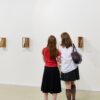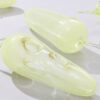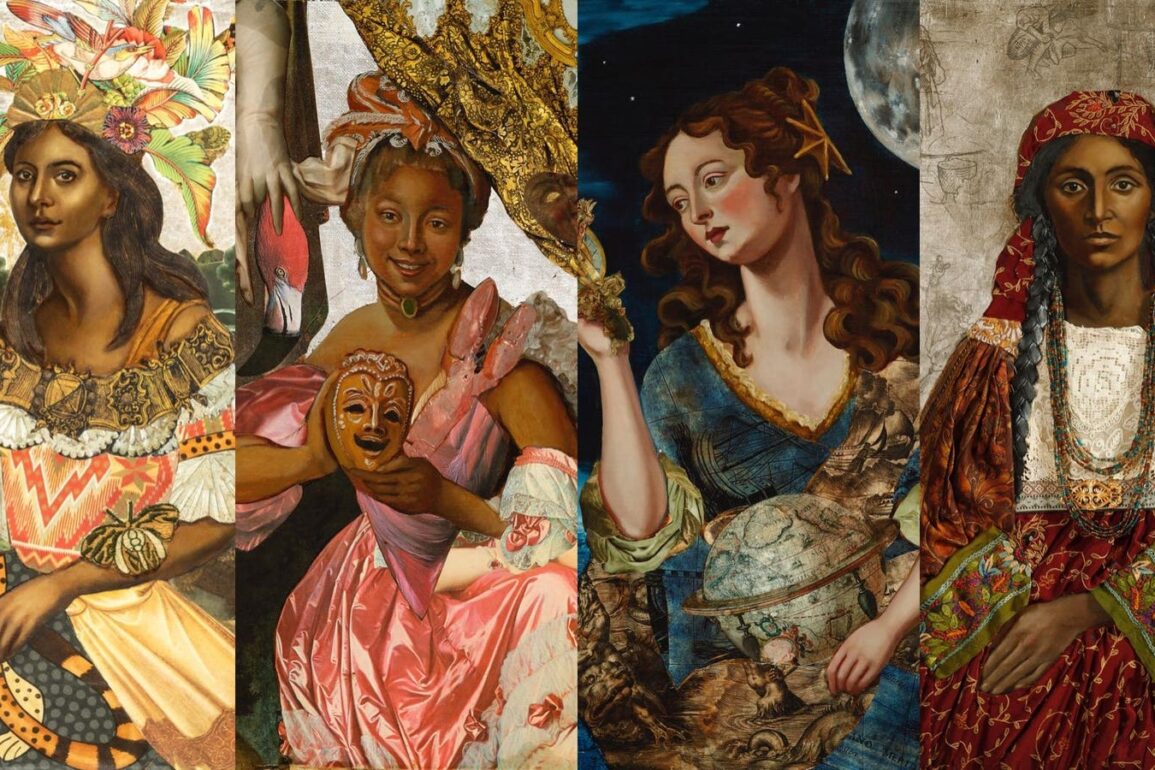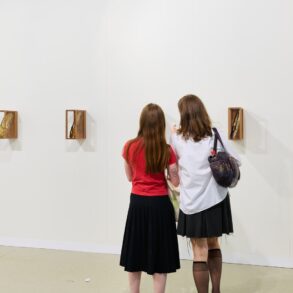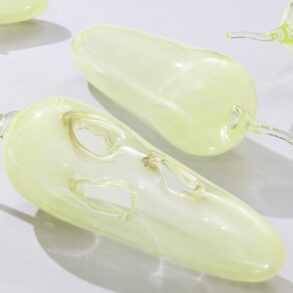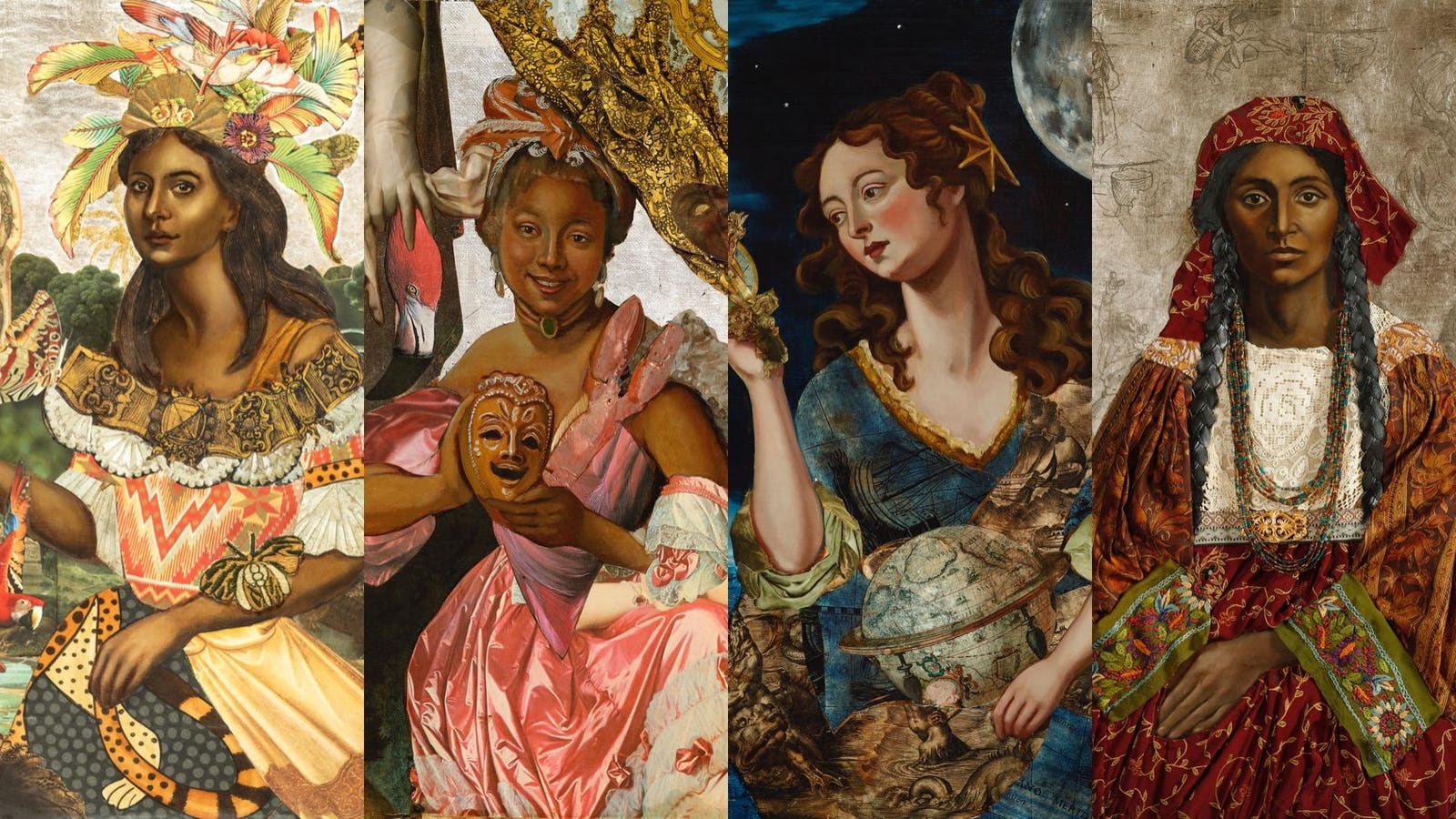
“The record of fashion pre-photography was painting,” Carrie Ann Baade said to me. We were in the painter’s studio. I’d been invited to come see the dozens of paintings that make up her latest exhibition, “Birthplace: Remembering Louisiana’s Forgotten Women.” The exhibition, at LeMieux Galleries in New Orleans, will be open from January 4 – February 15, 2025. Looking around her workspace, paintings for the show covered the walls and counters, perched or balanced on any available surface. Each portrait was a depiction of a member of Baade’s matrilineal family, mostly women, and all of whom were born or lived between 1690-1740.
Before we go any further, it is crucial to understand that before the 19th century photography did not exist. Humans have made camera obscurae for aeons, possibly as far back as the Neolithic era, but we did not figure out how to permanently affix an image onto a surface until roughly 1800 BCE. Once that was possible, it still took more than a century of photographic history for the cost of a photo to plummet to an amount affordable to the average person. This means that when we look at the early images, the first decades of portrait photography, the people we see depicted are almost always wealthy. Regular people, and perhaps especially their clothing, are rare photographic subjects before the Great Depression.
Melepomne by Carrie Ann Baade. 2024. Mixed Media, 14 x 11
Courtesy of Carrie Ann Baade
Birthplace, which includes some 20 larger paintings and 48 small ones, simmered beneath the unconscious before Baade ripped through whatever ether and brought them to life. Listening to her talk about the work, I got the distinct impression that this all may have grown out of Baade’s desire to lock eyes with the women who came before her. All families have lore, mysteries and traditions. Exploring the bits which have been lost to time, which (objectively) are often the stories of regular, everyday women, is an impossible thing to do. But artists are not concerned with such trifles, and I have personally witnessed numerous other miracles Baade has achieved.
This deep dive into her ancestors, reviving them, was inspired by a challenge from another artist. Baade is a Louisiana native, as is her mother, and she began to work out her family genealogy with a DNA test. “I have now checked 9,000 ancestors,” Baade told me, “which is crazy, but in 10 generations you have over 1,000 great grandparents. In 20 generations you have over 1 million great grandparents.” Given the massive number of potential subjects, Baade decided to focus on a narrow slice of history. “The research going back to the beginning of New Orleans starts at about 1690,” Baade explained. This is the colonial era, almost 20 years before the founding of the Big Easy, the era in her family history Baade found fascinating. “I chose to work from 1690 to 1740, and you know, it’s kind of a didactic.”
Calliope by Carrie Ann Baade. 2024. Mixed Media, 4 x 11.
Courtesy of Carrie Ann Baade
Baade is a professor in the College of Fine Arts at Florida State University, so in addition to creating entire universes in oil, she also guides students during the ineffable incubation period an artist goes through between leaving their family home and finding a way to survive on their own in the world.
Some of Baade’s female ancestors, artists themselves or not, came to America, long before it was the United States, as fille du roi. These were young French women, specifically of marriageable age, whose passage to the ‘New World’ was covered by King Louis XIV, dowry and trousseau promised and sometimes covered. Literally ‘the King’s daughters,’ the moniker was an indication of literal state sponsorship, and, though the exact number of ladies is argued, close to 800 women immigrated to New France (land already occupied by indigenous peoples) between 1663-1672, literally doubling the French population.
Of course there are no images of the people who made these voyages. The oldest photographs of family members Baade found were her grandparents’ parents, or maybe a generation earlier. Then there was family lore accompanied by contemporaneous sources that proved documentable. But what did these people actually look like? What would they have worn?
Polyhymia by Carrie Ann Baade. 2025. Mixed Media, 14 x 11.
Courtesy of Carrie Ann Baade
“Every single person had their own folder,” Baade told me. “Every single folder had 20 to 40 images of research; culture, time period, trying to approximate dress. I had terrible moments when I realized that I had put an Edwardian detail on a Regency period piece and had to revise the entire collage because it was totally wrong. Heaven forbid, a fashion historian comes to my opening and goes, that’s the wrong hairstyle. But I also changed hairstyles because I’m constantly reading and checking my work, and it’s also it’s a blend of cultures and so much of what we see is homogenized and it’s Eurocentric and it’s white. And I mean, these people wouldn’t have had their images taken.”
But artists tend to work from life, with exceptions of course, from photographs or from models posing. A not-artistic person would be surprised how little of the work that goes into a painting exists strictly within someone’s imagination.
“I utilized AI to reimagine all the people, based on who they were by origin,” Baade told me. “I used AI to invent who they were and then to pictorialize them. Then, if these two people had a baby, maybe it would look more like her, or if she married this family line knowing that these are French Canadians and these are Romani.” To recreate the clothing, Baade combined painting and collage, beads and textiles. The finished pieces look completely flat, at least until you bring your eye close.
Marie Turpin, Sister Ste. Marthe by Carrie Ann Baade. 2025. Mixed Media, 24 x 18.
Courtesy of Carrie Ann Baade
Each painting is named for the person it depicts, and many are adorned with silver leaf backgrounds, augmented with matte brushstrokes depicting bucolic scenes specific to the woman whose portrait they enhance. Toile de Jouy, that’s the name for this (French) style of fabric, a woven cotton decorated with domesticity. You’ve undoubtedly seen it, though perhaps you might not have known the name. One of Baade’s ancestors lived through a particularly violent and gruesome experience. She gets “murder toile.”
For women who were land owners, “as opposed to a more indigenous mindset,” Baade explained, “I’ve used maps from the same time period and of the same region in their clothing. They might not have identified as a landowner, they wouldn’t have conceived of that, they would have not seen a separation between themselves and the land.” It would be impossible to accurately explore this subject matter, during this specific era, without encountering the stories of America’s Indigenous peoples, enslaved peoples and those considered to be undesirable back in Europe, like Romani people. Baade’s gaze does not flinch, and she points her light towards dark places that others might avoid.
From the traditional Ursuline robes and wimple worn by one lady, to the regalia worn by others who intermarried with Iroquois and Algonquins, every figure in this show is a whole person. What people wear, in history and today, is a veritable download of information. Wardrobes tell stories; what a person likes and loves, what they fear, who they idolize. While clothing is not costume, apparel still always tries to give away our secrets. Maybe that’s because we want to talk about who we are and where we come from.
“I kept sending my family these articles and talking about these incredible stories and they just couldn’t imagine it,” Baade told me. “I wanted to make this life, this legacy of Gulf Coast history, which is American history, it’s world history. I wanted to make New Orleans history accessible. Everybody wonders who they are when they look at their nose or at their coloring. We look at facial hair patterns and wonder, who am I? This was always a source of intrigue for my mother’s family and I feel like now I can establish, at least in part, who they are. What they looked like, how they dressed.”
This post was originally published on this site be sure to check out more of their content

